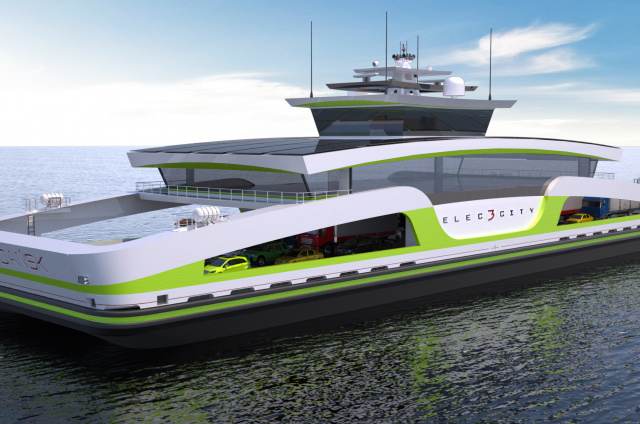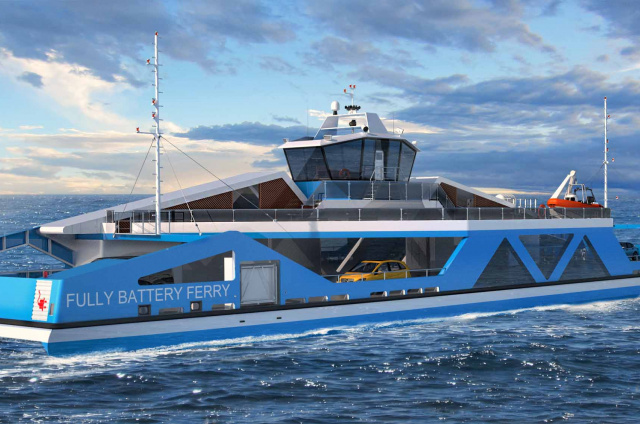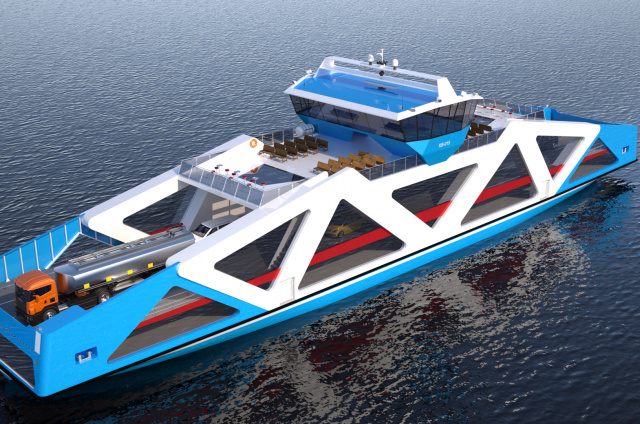The use of electric drive also has the additional advantage of reducing noise emissions - it is estimated that for a medium-sized ferry, the noise reduction is 10-20 dB (diesel-electric) or even higher when using battery solutions.
In cases where, due to the ship's distance, there is no possibility of zero-emission work, hybrid solutions come into play. In this case, the reduction of fuel costs is up to 60% and CO2 emissions up to 65%.
Battery installations on ferries can have a capacity of several hundred kWh to several (and in the future over a dozen) MWh. The cell manufacturing technology used (e.g. LCO, LFP or LNMC) is also selected at the design stage. The choice of the technology used affects the shape and nature of the operation of the entire unit power supply system.
According to the guidelines of Classification Societies, units using battery energy storage must have the appropriate notation - for example DNV-GL distinguishes between two: Battery (Power) and Battery (Safe).
Battery charging from land can be done wirelessly (e.g. solution by Cavotec / Wartsila) or wired, either via pantograph systems or cable connections.
Nelton takes all these aspects into account during designing process of the vessel - and thus each of our ferry is adapted to the vessel's ability to work on the assumed sailing route.


Passenger-Car Ferries ready for zero emissions.
The changing approach to environmental protection and the introduction of increasingly stringent standards regarding the pollutants emitted (IMO, EPA or EU regulations) lead to the need to search for and develop new methods of propelling watercrafts. This is especially true for vessels near large population centers, where environmental protection is becoming a first-order objective.
Ferries and passenger transport services are therefore at the forefront of the changes taking place. One possible solution is to use stored electricity for propulsion. The electricity generation process can take place outside of a vessel from green energy sources (such as wind farms, solar farms, and hydropower plants) or from conventional power plants. Even the second case is beneficial from the community point of view, as the pollution is remote from densely populated places, and in addition, the flue gas cleaning processes are much more effective.
Battery Banks as an energy carrier
Drive systems and optimal power system
Regardless of the type of propulsion of the ferry – classic propeller shaft (FPP / CFP), Voith-Schneider or azimuth thrusters - each of them can be powered by electric motors. Some modern solutions are already designed to be supplied with electricity as standard. The power supply system on ferries is selected for a specific case - we can distinguish power based on alternating current (many voltage configurations and frequencies 50 or 60 Hz) or more and more often used direct voltage (from 48V DC to even over 1000V DC - depending on the required power).
Nelton has many years of experience in innovative electric and hybrid passenger ferries. We participated in the design of the first fully electric M / V Ampere ferry launched in 2015. Nelton also participated in the design and preparation for production of several more hybrid ferries - using in addition to classic propulsion, also energy stored in battery banks.
Nelton has many years of experience in innovative electric and hybrid passenger ferries. We participated in the design of the first fully electric M / V Ampere ferry launched in 2015. Nelton also participated in the design and preparation for production of several more hybrid ferries - using in addition to classic propulsion, also energy stored in battery banks.
Our projects










